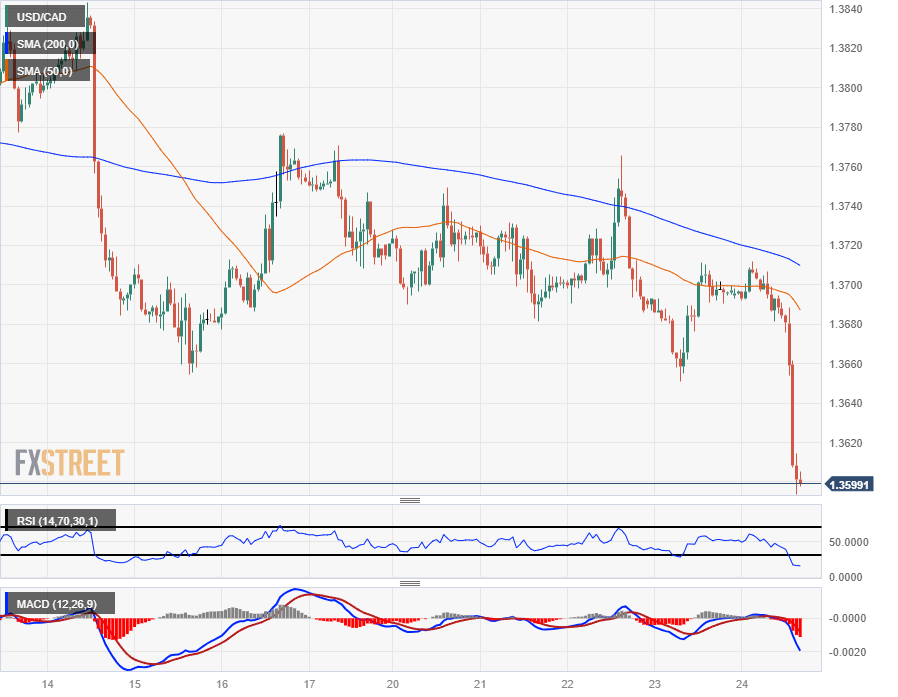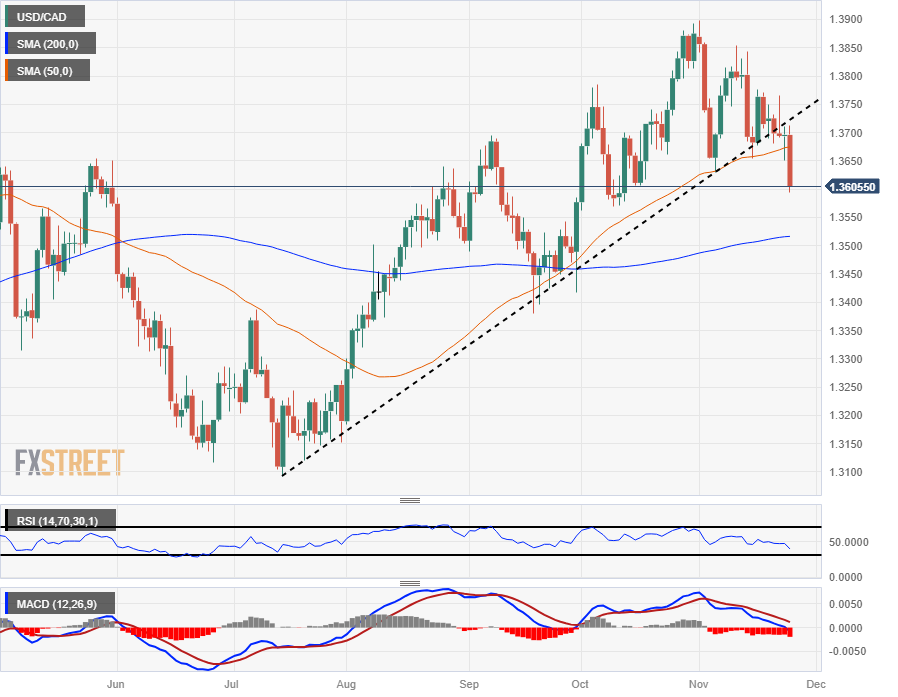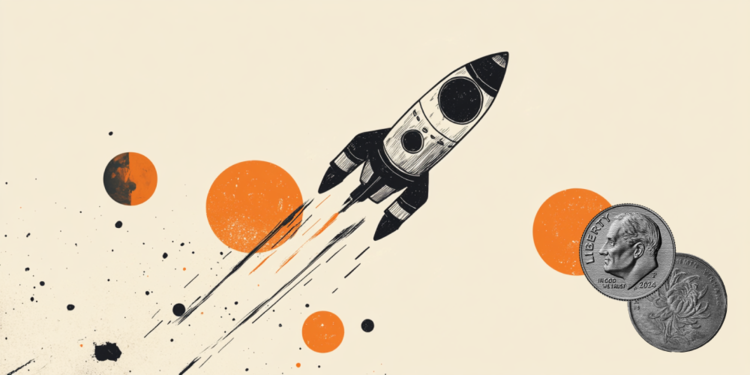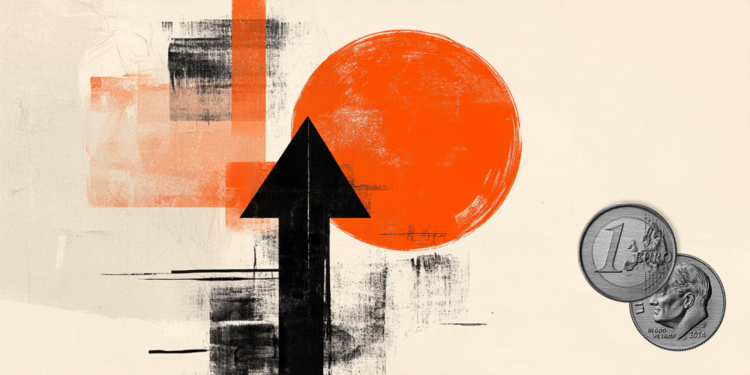- The Canadian Dollar strengthens to near six-week highs against the US Dollar on data releases.
- Retail sales in Canada surprised with a 0.6% increase in September.
- The Canadian dollar is advancing strongly.
The Canadian Dollar (CAD) found some bullish momentum in the second half of the session on Friday, taking the USD/CAD pair towards the 1.3600 area.
The retail sales report beat expectations and risk sentiment rebounded in the market, boosting the Canadian Dollar against the US Dollar (USD). The CAD rose across the board and the USD weakened heading into the week’s close.
Daily Market Summary: Canadian Dollar Rebounds, USD/CAD Returns to 1.3600
- The Canadian Dollar returned to action and rose against all major pairs on Friday.
- Retail sales in Canada rose 0.6% in September, well above Wall Street’s forecast of being unchanged and the -0.1% decline in August.
- Core retail sales (excluding automobiles, gas station purchases and replacement parts) rose 0.2%.
- In volume, retail sales rose 0.3% in September.
- Retail sales in the third quarter rose 0.6%, while retail sales volume fell 0.5% in the same period.
- The US Purchasing Managers’ Index (PMI) for November recorded a weakening of the manufacturing component, which hurt the Dollar.
- The US Composite PMI for November was stable at 50.7, as the manufacturing and services components were mixed.
- The manufacturing PMI fell from 50.0 to 49.4 points, below the forecast of 49.8 points.
- The US services PMI rose from 50.6 to 50.8, beating the forecast of 50.4.
Current rate of the Canadian dollar
Below is the percentage change of the Canadian Dollar (CAD) against major currencies today.
| USD | EUR | GBP | CAD | AUD | JPY | NZD | CHF | |
| USD | -0.24% | -0.53% | -0.68% | -0.36% | -0.04% | -0.56% | -0.27% | |
| EUR | 0.24% | -0.29% | -0.43% | -0.12% | 0.21% | -0.31% | -0.03% | |
| GBP | 0.54% | 0.28% | -0.13% | 0.17% | 0.50% | -0.04% | 0.28% | |
| CAD | 0.68% | 0.42% | 0.15% | 0.32% | 0.63% | 0.12% | 0.41% | |
| AUD | 0.36% | 0.11% | -0.17% | -0.31% | 0.32% | -0.20% | 0.09% | |
| JPY | 0.03% | -0.21% | -0.53% | -0.64% | -0.32% | -0.54% | -0.21% | |
| NZD | 0.58% | 0.32% | 0.03% | -0.11% | 0.20% | 0.52% | 0.29% | |
| CHF | 0.26% | 0.01% | -0.28% | -0.41% | -0.11% | 0.22% | -0.30% |
The heat map shows the percentage changes of the major currencies against each other. The base currency is chosen in the left column, while the quote currency is chosen in the top row. For example, if you choose the euro in the left column and scroll down the horizontal line to the Japanese yen, the percentage change in the box will represent EUR (base)/JPY (quote).
Technical Analysis: Canadian Dollar bounces late in the week and drags USD/CAD back to 1.3600
The late CAD breakout leads USD/CAD to challenge the 1.3600 zone, with the pair aiming directly for the 1.3500 target, just above the 200-day SMA.
The pair has decisively broken through the uptrend line from the July lows at 1.3100, and the technical support of the 50-day SMA has been broken.
The intraday decline in USD/CAD has hourly candles moving away from the short-term average levels, falling to 1.3600. Any bullish bounce will be seeing a range of technical resistance between the 50-day and 200-day SMA, which are falling to 1.3680 and 1.3700, respectively.
USD/CAD 1-hour chart
USD/CAD daily chart
Frequently Asked Questions about the Canadian Dollar
What factors determine the price of the Canadian dollar?
The key factors that determine the price of the Canadian dollar (CAD) are the level of interest rates set by the Bank of Canada (BoC), the price of oil, Canada’s main export product, the health of its economy, inflation and the trade balance, which is the difference between the value of Canadian exports and its imports. Other factors are market confidence, that is, whether investors bet on riskier assets (risk-on) or look for safe assets (risk-off), with the risk-on being positive for the CAD. As its largest trading partner, the health of the US economy is also a key factor influencing the Canadian dollar.
How do Bank of Canada decisions affect the Canadian dollar?
The Bank of Canada (BoC) exerts significant influence over the Canadian Dollar by setting the level of interest rates that banks can lend to each other. This influences the level of interest rates for everyone. The BoC’s main objective is to keep inflation between 1% and 3% by adjusting interest rates up or down. Relatively high interest rates are usually positive for the CAD. The Bank of Canada can also use quantitative easing and tightening to influence credit conditions, with the former being negative for the CAD and the latter being positive for the CAD.
How does the price of oil affect the Canadian dollar?
The price of oil is a key factor influencing the value of the Canadian Dollar. Oil is Canada’s largest export, so the price of oil tends to have an immediate impact on the value of the CAD. Generally, if the price of oil rises, the CAD also rises, as aggregate demand for the currency increases. The opposite occurs if the price of oil falls. Higher oil prices also tend to lead to a higher probability of a positive trade balance, which also supports the CAD.
How does inflation data influence the value of the Canadian Dollar?
Although inflation has traditionally always been considered a negative factor for a currency, as it reduces the value of money, the opposite has actually happened in modern times, with the relaxation of cross-border capital controls. Higher inflation often leads central banks to raise interest rates, attracting more capital inflows from global investors looking for a lucrative place to store their money. This increases the demand for the local currency, which in the case of Canada is the Canadian Dollar.
How does economic data influence the value of the Canadian dollar?
The published macroeconomic data measures the health of the economy and may have an impact on the Canadian dollar. Indicators such as GDP, manufacturing and services PMIs, employment and consumer confidence surveys can influence the direction of the CAD. A strong economy is good for the Canadian dollar. Not only does it attract more foreign investment, but it may encourage the Bank of Canada to raise interest rates, resulting in a stronger currency. However, if economic data is weak, the CAD is likely to fall.
Source: Fx Street
I am Joshua Winder, a senior-level journalist and editor at World Stock Market. I specialize in covering news related to the stock market and economic trends. With more than 8 years of experience in this field, I have become an expert in financial reporting.









